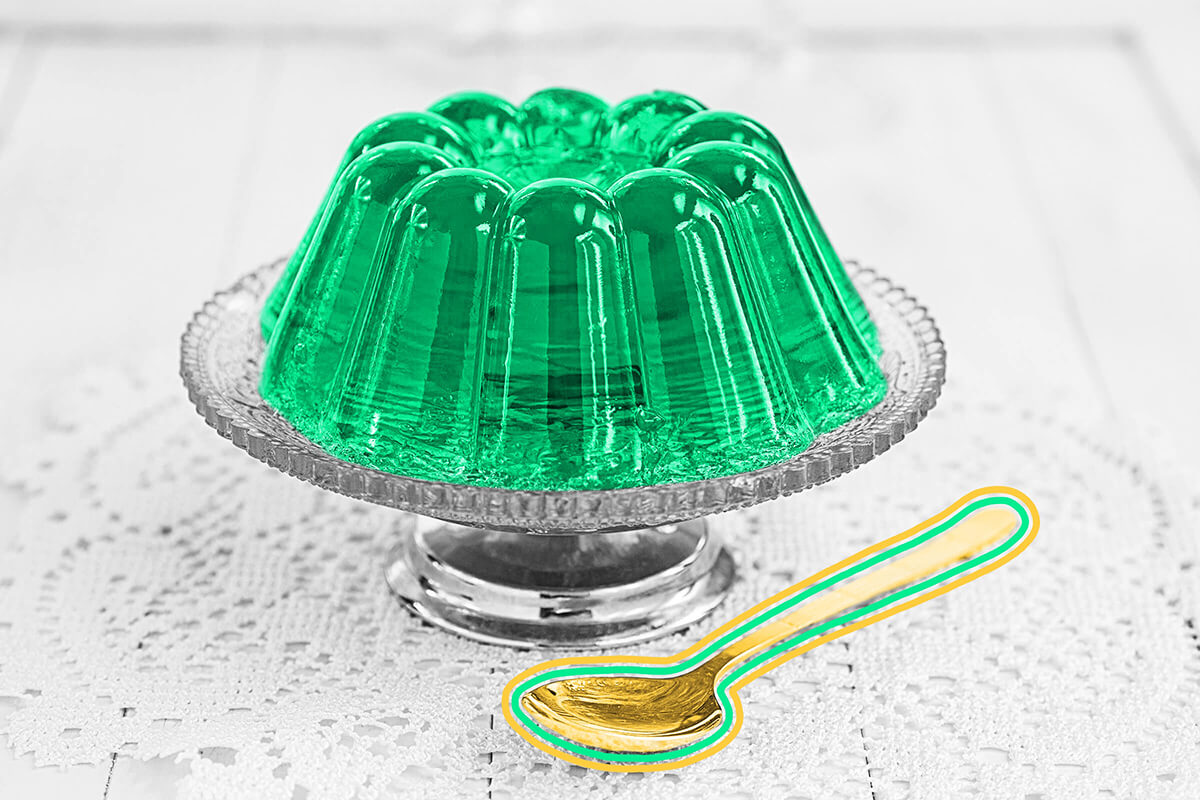
Jell-O used to be food for the elite.
Jiggly, wiggly, and inexpensive — Jell-O has a reputation for being the ultimate affordable and fun dessert. But the moldable treat we’re familiar with today wasn’t always affordable fare for the masses. At one time, its key ingredient — gelatin — was difficult to come by, making any gelatin-rich dish a symbol of wealth and social standing. What’s more, the earliest gelatin dishes weren’t post-dinner treats; in medieval Europe, cooks used gelatin to preserve meats in aspics, making savory jellies similar to modern head cheeses. Extracting gelatin back then was time-intensive: Cooks spent days boiling animal bones and byproducts, then straining the liquid before letting it set into its gelatinous state. This lengthy, involved process meant that gelatin dishes were rarely served at the dinner tables of everyday folks who didn’t employ kitchen staff.
Gelatin’s status as a high-class delicacy would only last a few centuries. Peter Cooper, an inventor who also designed the first American steam locomotive, created a “portable gelatin” in 1845 that was easily reconstituted with hot water. But Cooper was uninterested in marketing his invention, and his gelatin was largely ignored despite its potential success with cooks who yearned for an easier method for making gelatin — such as suffragette and cookbook author Mary Foote Henderson, whose 1876 Practical Cooking and Dinner Giving footnoted her gelatin recipe by saying she’d never again undertake the arduous task of making the stuff. Cooper’s creation was eventually sold to a New York cough syrup manufacturer, who added fruit flavors and branded it with its Jell-O name in 1897. By the early 20th century, Jell-O ads promoted the dessert as a low-cost, high-society wonder, and the Great Depression and World War II solidified Jell-O’s versatility as a budget- and rations stretcher — a reputation that has carried on for more than 100 years.
Gelatin isn’t just for eating — it was once an important ingredient used in 19th and 20th-century photo developing. Gelatin silver prints emerged around the 1870s, using a specialized photo paper that included a layer of silver salt particles infused in gelatin. The developing process was a photography breakthrough, because it created detailed images with refined clarity that were more stable and durable than other early photographs. Despite their detail, gelatin silver prints didn’t take off in popularity for nearly four decades — until World War I, when war-related shortages of other popular photo papers (specifically those made with platinum) led photographers to experiment with a variety of paper options. Finally recognized for their ability to provide crisp black-and-white images, gelatin silver prints remained popular through the 1970s. While not commercially used today, many of those early photographs live on, giving us crystal-clear glimpses of historical events.

